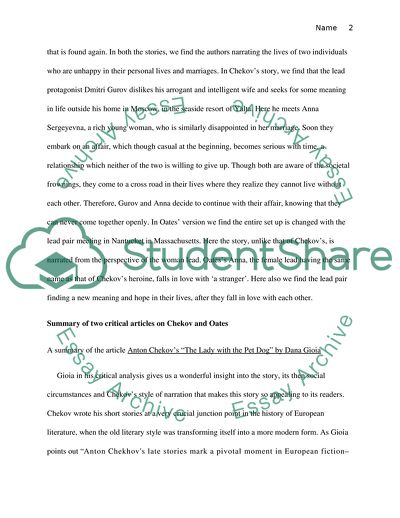Cite this document
(Comparative Analysis of A.Chekhov's and J.Oates's Stories Book Report/Review, n.d.)
Comparative Analysis of A.Chekhov's and J.Oates's Stories Book Report/Review. https://studentshare.org/literature/1731536-compare-two-stories-lady-with-the-dog-by-a-chkhov-and-lady-with-the-pet-dog-by-oates
Comparative Analysis of A.Chekhov's and J.Oates's Stories Book Report/Review. https://studentshare.org/literature/1731536-compare-two-stories-lady-with-the-dog-by-a-chkhov-and-lady-with-the-pet-dog-by-oates
(Comparative Analysis of A.Chekhov's and J.Oates'S Stories Book Report/Review)
Comparative Analysis of A.Chekhov's and J.Oates'S Stories Book Report/Review. https://studentshare.org/literature/1731536-compare-two-stories-lady-with-the-dog-by-a-chkhov-and-lady-with-the-pet-dog-by-oates.
Comparative Analysis of A.Chekhov's and J.Oates'S Stories Book Report/Review. https://studentshare.org/literature/1731536-compare-two-stories-lady-with-the-dog-by-a-chkhov-and-lady-with-the-pet-dog-by-oates.
“Comparative Analysis of A.Chekhov's and J.Oates'S Stories Book Report/Review”. https://studentshare.org/literature/1731536-compare-two-stories-lady-with-the-dog-by-a-chkhov-and-lady-with-the-pet-dog-by-oates.


